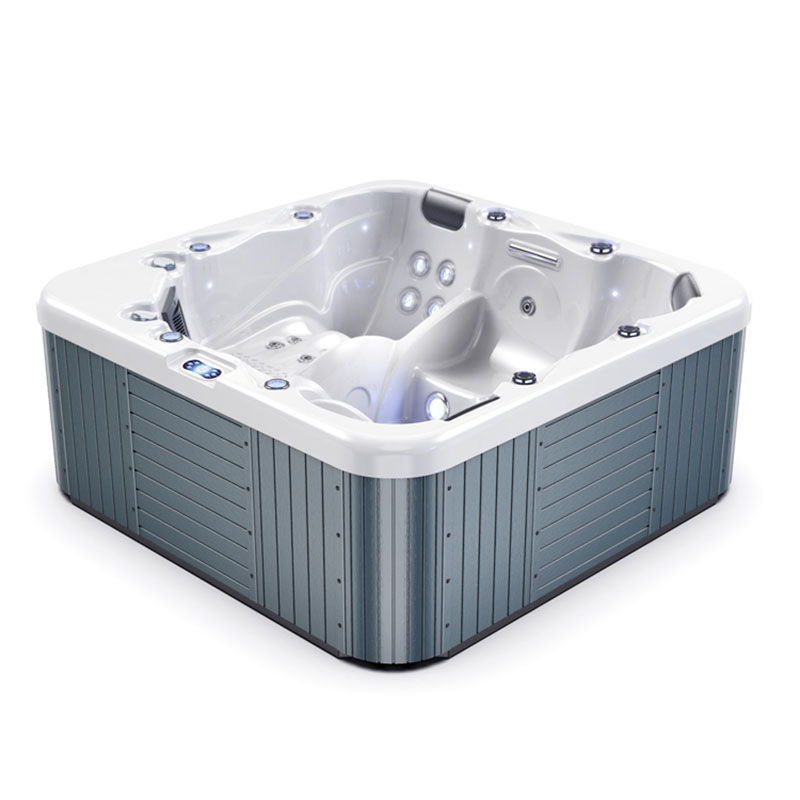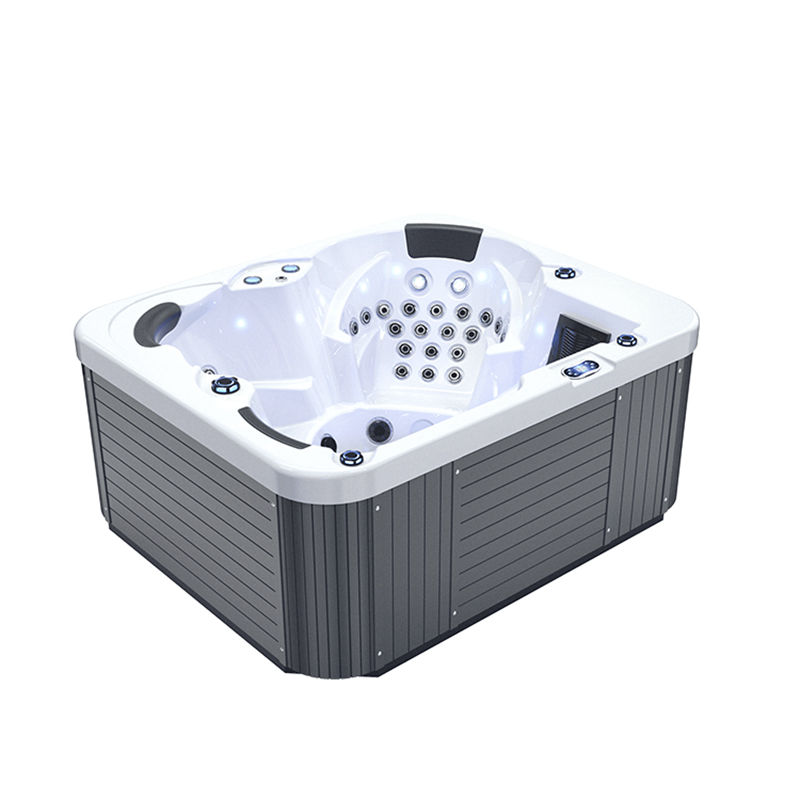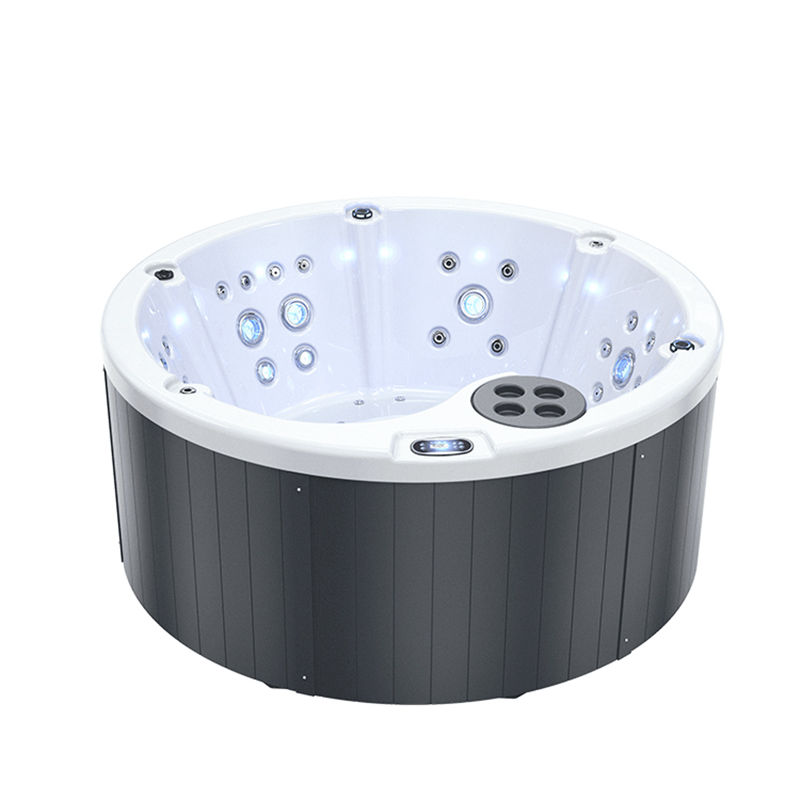In the process of maintaining a swim spa hot tub, the concept of "shock treatment" is often mentioned. Shock treatment is a fast and powerful water purification method that usually uses high concentrations of oxidants such as chlorine or non-chlorinated compounds to break down organic matter, bacteria and impurities in the water. Many swim spa hot tub users choose to use shock treatment when they encounter foam, turbid water or odor.
However, a common question is: "Can I shock my swim spa hot tub two days in a row?" This question involves many aspects, including water quality, equipment safety, chemical reactions and human health. This article will explore this issue in depth from multiple angles to help users understand the impact and feasibility of continuous shock treatment.
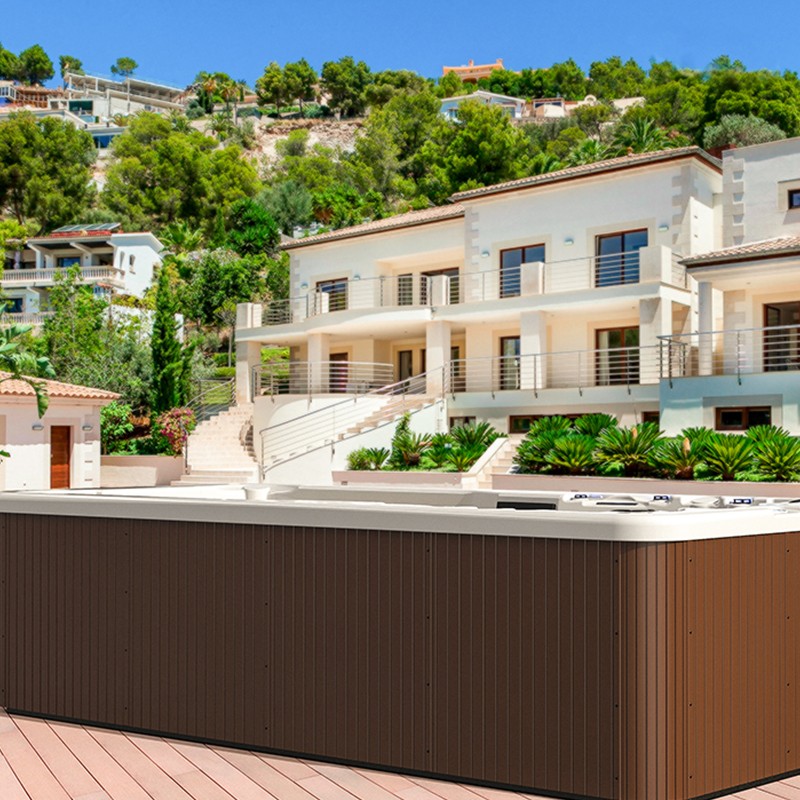
What is the principle and function of shock treatment?
Before discussing whether a swim spa hot tub can be continuously shock treated, we must first understand the basic principles of shock treatment.
1. Basic principles of shock treatment
The main purpose of shock treatment is to quickly oxidize and decompose organic matter, bacteria, algae and other impurities in water by increasing the concentration of oxidants in water. Whether it is chlorine shock treatment (such as sodium hypochlorite) or non-chlorine shock treatment (such as persulfate), their common mechanism of action is to destroy the molecular structure of organic pollutants through oxidation reactions, thereby decomposing them into more harmless components.
The effect of oxidants is temporary and rapid. Through a shock treatment, most harmful substances in the water can be oxidized in a short period of time, but this effect is not continuous. Generally, a swim spa hot tub needs to be shock treated once every one to two weeks to maintain the cleanliness and hygiene of the water.
2. The effect of shock treatment
Shock treatment can quickly increase the oxidation-reduction potential (ORP) in the water, making it impossible for harmful bacteria, viruses, fungi and other microorganisms in the water to survive. In addition, shock treatment can also decompose organic matter left in the water due to human sweat, grease and detergent, thereby preventing the water from becoming turbid or producing odors. For a swim spa hot tub, shock treatment is a necessary means to effectively maintain cleanliness and hygiene.

Can I shock the swim spa hot tub for two consecutive days?
Since shock treatment is so important and effective, many users may think that since one shock treatment can effectively clean the water, can it be better to shock treatment for two consecutive days? However, continuous shock treatment is not a simple process of doubling cleaning. It actually involves a series of potential risks in chemistry and equipment.
1. Risk of excessive oxidant
Each shock treatment requires adding a large amount of oxidant (such as chlorine or non-chlorine chemicals) to the water. These oxidants quickly break down pollutants in a short period of time and are then gradually consumed by organic matter in the water. However, if excessive oxidants are added continuously in a short period of time, the chemical composition of the water will become unbalanced, which may cause water quality problems and health hazards.
· Chemical imbalance of water quality: Excessive oxidants may cause the pH value in the water to drop or rise rapidly, causing acid-base imbalance of water quality. When the pH value is too low, the water becomes acidic, which may cause corrosion to the interior of the bathtub equipment, especially metal pipes and fittings. In addition, acidic water may also irritate human skin, eyes and respiratory system.
·Excessive residual chlorine in the water: If chlorine shock treatment is performed for two consecutive days, the residual chlorine concentration in the water may be too high. High concentrations of residual chlorine not only produce a strong chlorine smell, but may also irritate the skin and eyes, and even cause respiratory discomfort. High concentrations of chlorine can also damage the seals, filters and other materials of the swim spa hot tub.
·Increased irritation: Oxidants themselves may be irritating to the skin and mucous membranes. Excessive oxidants remaining in the water may cause skin allergies, red and swollen eyes or respiratory discomfort when users use the bathtub.
2. Impact of swim spa hot tub equipment
The equipment design of the swim spa hot tub is based on a certain tolerance range of chemical substances. Excessive chemical treatment may have irreversible effects on the equipment.
·Accelerated equipment aging: The oxidants in the shock treatment will have a certain erosion effect on the equipment inside the swim spa hot tub, especially for older equipment. Two consecutive days of high-intensity shock treatment will accelerate the aging of the equipment. Filters, nozzles, seals and rubber parts in the pipes are most susceptible to damage, and long-term use will shorten the service life of the equipment.
·Overburdening of water pumps and filtration systems: After shock treatment, the bathtub's filtration system needs to handle a large amount of decomposed impurities and organic matter. If shock treatment is performed for two consecutive days, the burden on the water pump and filtration system will increase, which may cause the water pump to over-operate or even cause mechanical failure. In addition, the filter may also be clogged due to excessive treatment of impurities, affecting the efficiency of the entire water circulation system.
3. Potential harm to the human body
For swim spa hot tub users, the problem of chemical residues caused by shock treatment for two consecutive days will also have an impact on health.
·Skin problems: High concentrations of chlorine or other oxidants can irritate the skin. Shock treatment for two consecutive days may cause excessive levels of residual chemicals in the water, and users may experience dry skin, itching, or even allergic reactions. People with sensitive skin are particularly susceptible.
·Respiratory system problems: High concentrations of oxidants (such as chlorine) release irritating gases in water, especially in hot water environments, where chlorine evaporates faster. If the bathtub is used immediately after shock treatment, the user may inhale excessive chlorine, causing respiratory discomfort, and even symptoms such as headaches and coughs.
· Eye irritation: High concentrations of chlorine or other chemicals remaining in the water may cause eye irritation, leading to symptoms such as redness, swelling, and tearing. Especially if the water is not diluted enough or the treatment time is insufficient, entering the bathtub immediately may cause great damage to the eyes.
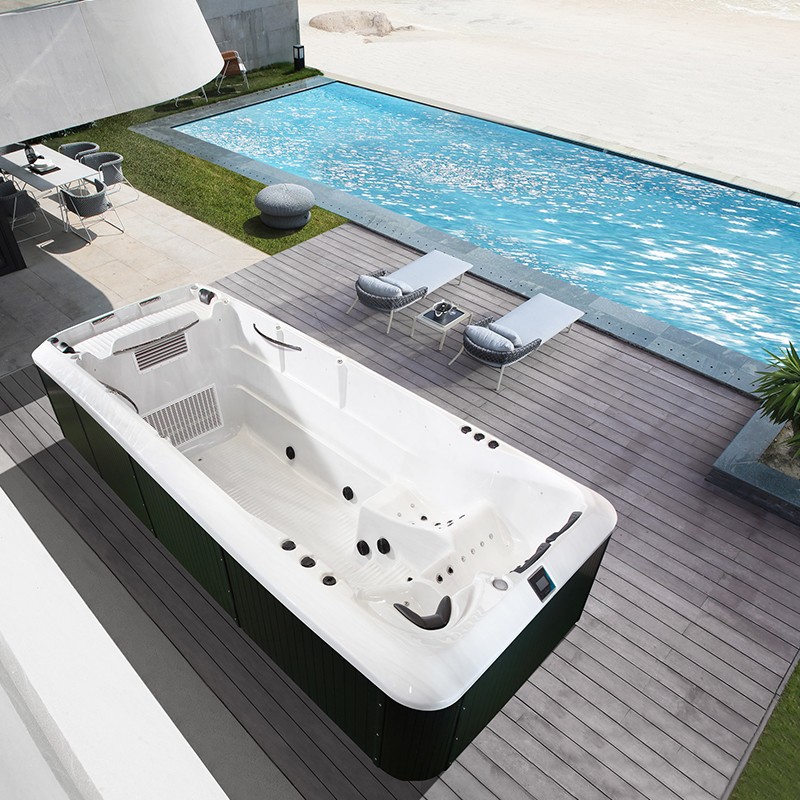
How to best shock the swim spa hot tub?
Although shock treatment is very important in maintaining the water quality of the swim spa hot tub, to achieve the best results, users should follow certain usage specifications and best practices.
1. Determine a reasonable shock treatment frequency
Usually, the swim spa hot tub can be shock treated once a week or every two weeks. If the frequency of use is high, especially when multiple people use it at the same time or the water quality deteriorates, the treatment frequency can be appropriately increased, but it is not recommended to shock for two consecutive days.
· Number of users: If there are many users in the bathtub, it is reasonable to shock once a week. If the frequency of use is low (such as once a week), it can be treated once every two weeks.
· Weather and environmental factors: Impurities such as dust, leaves, and insects in the outdoor environment can also affect the water quality. If the swim spa hot tub is exposed to these environments, the frequency of shock treatment can be appropriately increased as needed.
2. Wait for the appropriate time after shock treatment
After shock treatment, always wait for the concentration of chemicals in the water to drop to a safe level before using the swim spa hot tub. Generally, wait at least 12 to 24 hours after shock treatment to ensure that the water quality returns to normal.
· Test water quality: Use a professional water quality test kit to test pH, residual chlorine concentration, and total alkalinity to ensure that they are within the normal range. The pH value should be maintained between 7.2 and 7.6, and the residual chlorine concentration should be between 1 and 3 ppm.
· Avoid immediate use: It is dangerous to use the swim spa hot tub immediately after shock treatment because the chemicals in the water may not have been fully diluted. Users should avoid entering the bathtub when the water quality has not yet recovered.
3. Adjust the amount of chemicals used
Different swim spa hot tubs require different doses of shock treatment agents. Users should appropriately adjust the amount of oxidant used according to the capacity of the bathtub and the actual water quality. Too much oxidant is not only harmful to water quality, but also increases potential harm to equipment and human body.
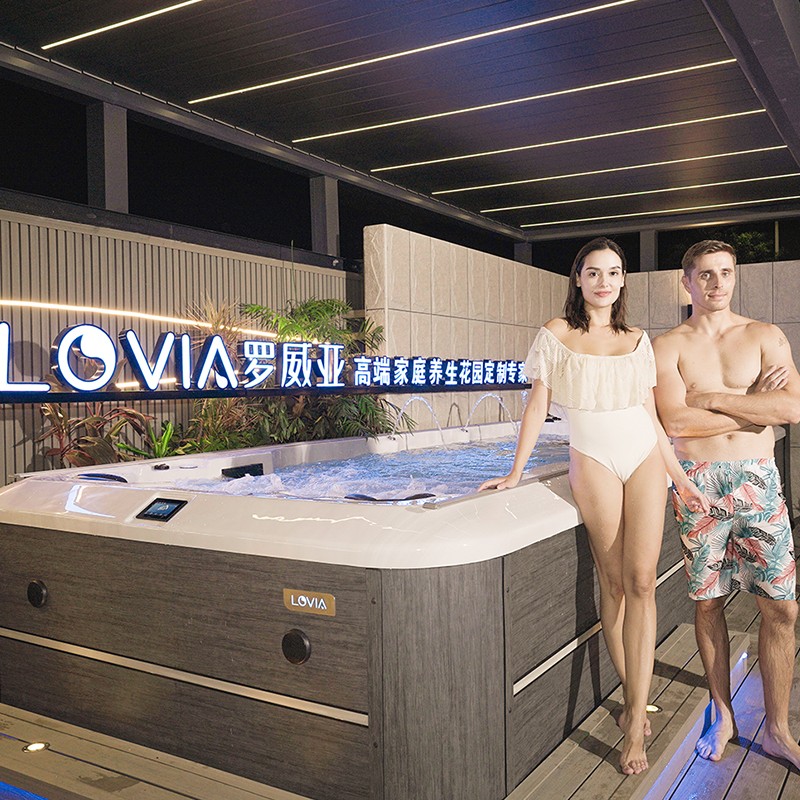
Do you offer promotional pricing for first-time buyers?
Yes, we offer special promotions for first-time wholesale buyers. These may include discounts on select models, bundled pricing, or free customization options. We understand that initial purchasing decisions require trust, so we support new clients with competitive factory quotes and flexible payment terms. Reach out to our sales team to learn more about our current spa promotions.


